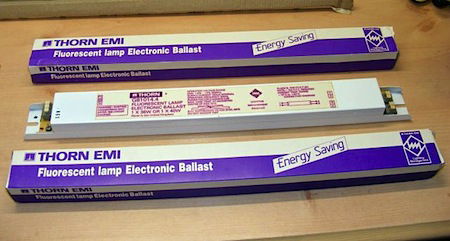Paul asks this question, which concerns a new garage lighting circuit in which the electronic ballasts appear to leak. It has been answered by Thorn (Theme – Lighting):

This Q & A is one of thousands posted in our Technical Expertise area, and answered on a daily basis by our Voltimum Experts.
Question: On taking the insulation resistance on a new lighting circuit in a garage with 6 X 1500mm fittings, I got a low (acceptable) reading neutral to earth.
I had the live conductors connected out and not to the fittings, but the neutral and earth connections terminated in the fitting.
I got >2000 L/E And L/L, but only 34M ohms neutral/earth.
So my question is, do the new electronic ballasts leak between neutral and earth?
Answer: The electronic ballasts contain class ‘Y’ capacitors between neutral to earth and between live and earth (typically 1nF) and 0.33uF class ‘X’ capacitors between live and neutral. These are fitted to ensure that they conform to the EMC requirements.
There will indeed be some leakage measurement because of these components.
Additional information:
Electronic operating devices for lamps are sensitive to high-voltage transients. This must be taken into consideration when subjecting luminaires to routine testing during manufacture.
According to IEC 60598-1 Annex Q and ENEC 303-Annex A, each luminaire should be subjected to an insulation test for 1 second at 500 VDC. The test voltage is applied between the linked phase/neutral conductor terminal and the protective earth terminal. The insulation resistance must be at least 2 MΩ.
As an alternative to measuring the insulation resistance, IEC 60598-1 Annex Q describes a dielectric strength test at 1500 VAC (or 1.414 x 1500 VDC).
To avoid damaging electronic operating devices, we urgently recommend that this dielectric strength test should NOT be performed.
To see many more Q & A in Voltimum UK's Experts Area, please click on the link. Experts from leading organisations provide online answers to your technical questions on a broad range of subjects. Our searchable database of existing Q & As now contains over 3,500 entries; you can browse through them here.
